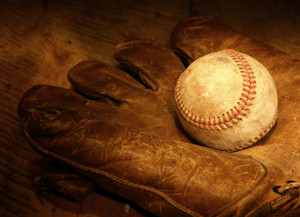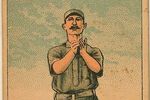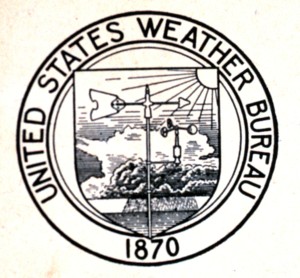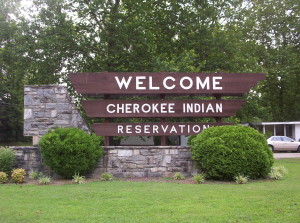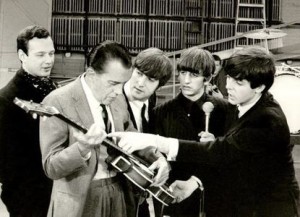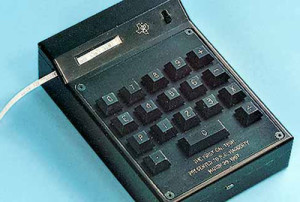1887 For a record price of $10,000, the Cubs, then known as the White Stockings, sell future current NL batting champ and future Hall of Famer Mike Kelly to the Beaneaters. The popular box office draw, who will earn his nickname King while playing in Boston, will continue to be productive, hitting .311 for a three-year span during his first tenure with the team.
1928 The American Legion baseball program, on the brink of bankruptcy, receives a pledge of $50,000 from Commissioner Kenesaw Mountain Landis and the MLB Advisory Council to continue its development of a national championship program for teenagers. With the much-needed funding, Legion Baseball will continue in 1928, and the following season, teams from every state and the District of Columbia will participate in the youth tournament.
1934 Sam Rice, who spent the first 19 seasons with the Senators, ends his career after playing one year with the Indians. The 44 year-old future Hall of Famer collected 2,987 career hits during his two decades in the major leagues.
1945 Braves president Bob Quinn retires, with his son, John, becoming the team’s general manager of the team following his father’s departure. The former owner of the Red Sox and Braves, whose grandson will also become a major league GM, will serve as president of the Baseball Hall of Fame from 1948 to 1951, resigning from the position after suffering two strokes.
1957 Ten years after the integration of major league baseball, the Georgia Senate unanimously approves a bill, which prohibits blacks from playing baseball with whites except at religious gatherings. Less than a decade later, the Braves will move its franchise from Milwaukee to Atlanta, the state’s capital.
1959 The Orioles, in an effort to find a backup for first baseman Bob Boyd, buy 32 year-old veteran infielder/outfielder Whitey Lockman from the Giants for an undisclosed sum. In June, Baltimore will trade their new acquisition to the Reds for Walt Dropo, who has played the position exclusively since since winning the Rookie of the Year award in 1950.
1996 Kevin McClatchy and his group of investors purchase the Pirates from the Pittsburgh Associates. The deal includes the condition of having to build a baseball-only ballpark in Pittsburgh within five years.
2001 The Ford C. Frick Award, named in memory of the former baseball commissioner who was a broadcaster, will be given to Marlins’ radio announcer Rafael Ramirez during Hall of Fame induction ceremonies this summer. ‘Felo’, who began his 56-year career broadcasting games in Cuba, has been in the Miami broadcast booth since the team’s inaugural season in 1993.
2001 According to the Detroit Free Press, major league baseball is informing umpires to remove pitchers who deliberately throw a beanball at a batter’s head from the game, without warning. The crackdown, according to officials, is a clarification and reinforcement of an existing rule.
2002 The Tigers sign Dmitri Young (.302, 21, 69) to a four-year contract with two team options. The Tigers traded outfielder Juan Encarnacion (.242, 12, 52) and minor league right hander Luis Pineda in December to acquire the first baseman/outfielder from the Reds.
2003 After much speculation, the Chunichi Dragons return Kevin Millar to the Marlins for an undisclosed amount of money for relinquishing its rights. After reconsidering an offer from the Red Sox, the outfielder had a change of heart and didn’t want to play for the Japanese Central League team.
2005 The Twins sign Johan Santana (20-6, 2.61), who was eligible for arbitration, to a four-year deal. Last season, the 25 year-old southpaw became the first Venezuelan to win the Cy Young Award.
2007 For first time at Wrigley Field, the Cubs will allow ads on the green doors which are located in the ivy in the left- and right-field bleachers, according to Jay Blunk, director of marketing and sales. Although the team has been approached by other companies, Under Armour, whose company spokesman is newly acquired outfielder Alfonso Soriano, is the “right fit” for the 7-by-12 foot signage featuring the performance apparel’s signature logo.
2009 The Angels and Bobby Abreu (.296, 20, 100) agree to a $5 million, one-year deal. The 34 year-old free-agent outfielder, taking a significant pay cut after having a solid season with the Yankees last season, is expected to add some much-needed punch from the left side for the AL West champions.
2011 Avoiding arbitration, Carlos Marmol agrees to a three-year, $20 million deal with the Cubs. The 28 year-old closer saved 38 games in 43 opportunities last season along with compiling a 2-3 record and an ERA of 2.55.
2011 The Yankees come to terms with free-agent Andruw Jones on a $1.5 million, one-year contract, eliminating the likelihood of the team resigning Johnny Damon. ‘The Curaçao Kid’, best known for his outstanding outfield defense for the Braves at the start of his career, will spend two seasons in the Bronx, before finishing his 17-year major league tenure with a lifetime .254 batting average.
2014 Avoiding arbitration, 24 year-old outfielder Jason Heyward and the Braves agree to a two-year, $13.3 million deal. After the season, Atlanta will trade their 2007 first-round pick (14th overall) along with right-handed reliever Jordan Walden to the Cardinals for right-handers Tyrell Jenkins and Shelby Miller.
2014 Freddie Freeman agrees to a franchise-record eight-year, $135 million contract, surpassing the six-year, $90 million deal the Braves gave Chipper Jones in 2000. The 24 year-old All-Star first baseman, who finished fifth in the MVP balloting this season, has hit .285 during his four years with the team, annually averaging 17 home runs and 70 RBIs.

